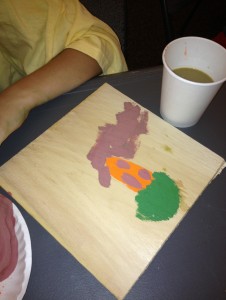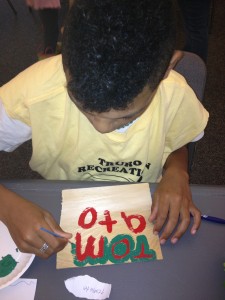As the school year ends, parents and teachers are always asking me how to help their children with handwriting. Especially as the “Summer Activities” get doled out. I can’t think of a bigger kill joy than asking a six year old to sit inside and copiously copy letters and complete hand writing drills. Moving the activity to the picnic table under the maple tree really doesn’t reduce the drudgery.
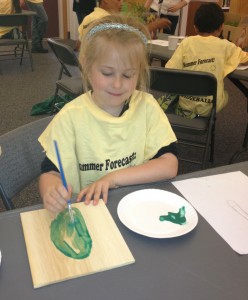 So, embrace the reading list carefully crafted by experienced teachers with their breadth and depth of knowledge of children’s literature. These books will bring joy and entertainment to your children. But if the packet includes worksheets to practice writing…those just may have to “accidentally” get tossed in the trash…or eaten by the dog…
So, embrace the reading list carefully crafted by experienced teachers with their breadth and depth of knowledge of children’s literature. These books will bring joy and entertainment to your children. But if the packet includes worksheets to practice writing…those just may have to “accidentally” get tossed in the trash…or eaten by the dog…
There are so many ways to entice your children to write, but worksheets are NOT the way. Today we’ll begin with how The Children’s Garden encourages and MOTIVATES the children to write. In the days to come, more specific information on how to build hand writing skills and activities to foster proficiency will be covered.
The last blog post, Creating Signs, featured the creation of signs by older students. I mentioned that the activity can be adapted to a younger crop of students and indeed just the next day, we had torrential rains, forcing the after school garden group inside. The children ranged from kindergarten to second grade. We made beautiful signs.
The kids came up with their own strategies of how to proceed: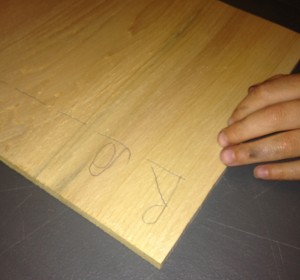
- Some practiced with pencil and paper before sketching and painting on the wood shingle.
- A first grader made lines for each letter to help keep the letters uniform.
- Pairs of children shared the plate of paint and a paper cup of water to wash off paint from the brush.
- Given enough time, much creative elaboration ensued!
Equipment:
- Paints (Tempra or Acrylic)
- Paint Brushes
- Paper cup & water
- Paper & pencils (to practice)
- Wood Shingles
- With a group we found pairing up the children worked best.
- The name of each plant grown in the garden was written on a piece of paper and put in a hat; children picked out a word to draw and illustrate.
- Suggestions were made to practice if they liked.
- Paper and pencil were provided as requested.
- Help with spelling and reminders of what the plant looked like were provided as needed.
- Some asked for the word to be written for them to copy. Others had the spelling dictated.
Benefits:
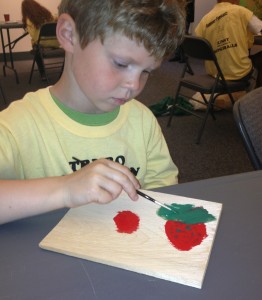 Children practice writing letters (mechanics of writing, phonics, etc. all come into play)
Children practice writing letters (mechanics of writing, phonics, etc. all come into play)- Bilateral Coordination, Eye-hand, Visual Attention all required
- Organizing the picture and word require spatial reasoning and organization
- Reinforce learning of plants we grow (identification)
- Pride in the anticipation of our eventual harvest!
This post reflects the partnership and creative collaboration between The Motor Story, Sustainable CAPE , Truro Public Library and Truro Recreation.

